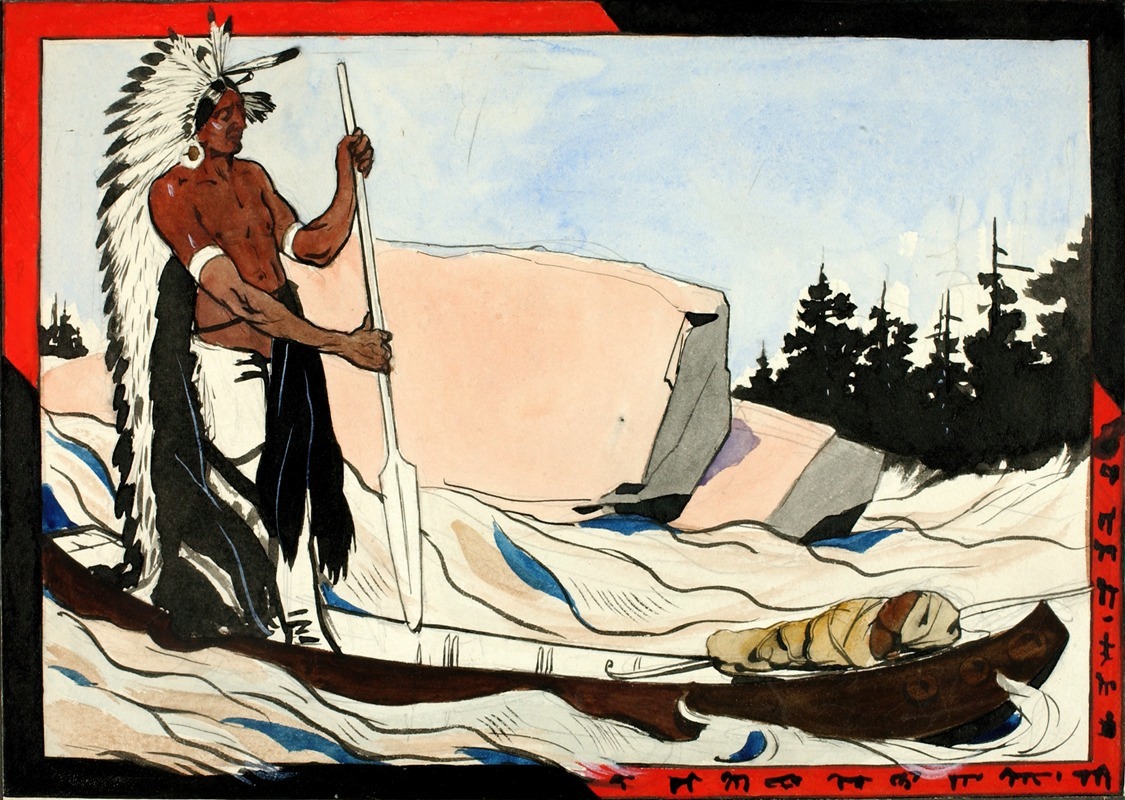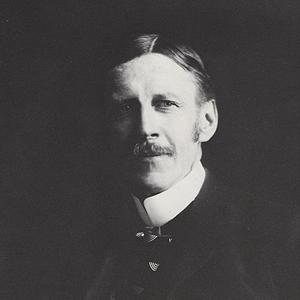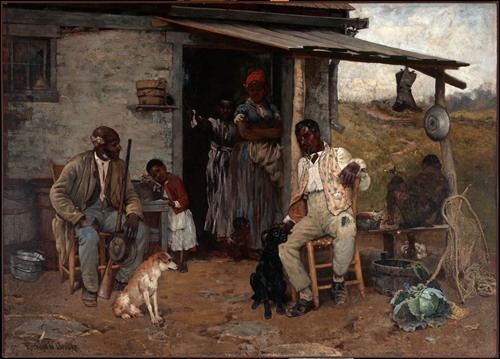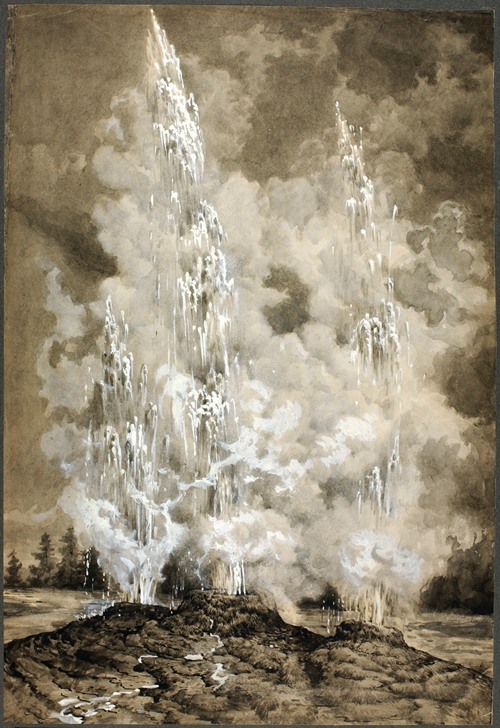

Richard Norris Brooke was an American painter known especially for his genre scenes depicting African-American subjects. He has been described as "first among several artists who brought a national distinction to the Washington art community, and who were instrumental in making it more professional through the establishment of schools, clubs, and exhibitions."
Born in Warrenton, Virginia, Brooke was the son of James Vass Brooke and Mary Norris Brooke; he lived in Warrenton through the American Civil War, during which it was under occupation by the Union Army. He is believed to have received his earliest instruction in art from William D. Washington, although definitive proof has never been found. The elder Brooke had made arrangements for his son to travel to Rome to study art under William Randolph Barbee, but the outbreak of war prevented the trip from taking place. Instead in 1865 Richard matriculated at the Pennsylvania Academy of the Fine Arts, at which he studied under Edmund Bonsell and James Lambdin, and from which he graduated in 1871. While living in Philadelphia he taught at a number of schools, including the Mount Vernon Institute; the Broad Street Military Academy, and Villa Nova College. At the death of William D. Washington in 1871, Brooke was appointed the chair of the Department of Fine Arts at the Virginia Military Institute, but he left the position the following year. In 1873 he became United States Consul at La Rochelle, in which role he remained until 1877; during his time in France he studied with Léon Bonnat, and later he would work with Carolus-Duran and Benjamin Constant.
Brooke settled in Washington, D.C. in 1880 and remained associated with the artistic life of that town until his death. He continued to travel to Europe, at various points visiting Paris, London, and The Hague. In Washington he moved into Vernon Row, a well-regarded studio building east of the White House, where he painted and displayed his art to the public. Later, with Max Weyl, he established a "Barbizon Studio" diagonally across from the former Corcoran Gallery on 17th St. and Pennsylvania Ave., but the commercial nature of the neighborhood meant that a true artistic community could not take hold in the area.
Brooke soon became active in the artistic affairs of his new city, becoming vice-president of the Washington Art Club in 1881 and remaining in that role until 1884. In the latter year he was among those who founded the Art Students League of Washington, at which he would also work as an instructor. Long on the staff of the Corcoran School, he serve as its vice principal from 1902 until 1917; his work was seen in the Corcoran Biennials of 1912, 1914, and 1916. He was also a member of the Washington Water Color Club, and showed work at that society's group exhibitions. In 1909, and again in 1913, he chaired the Medals and Badges Committee of the President's Inaugural Committee. In 1882 his work appeared in the annual show of the National Academy of Design; his paintings were also seen at William MacBeth's gallery. He was an exhibitor at the Cotton States and International Exposition, at which he won a medal, and at the National Conservation Exposition, at which his work appeared alongside that of numerous Washington colleagues. During his career he won a number of awards, including the Parsons Prize from the Society of Washington Artists in 1901 and the third Corcoran prize in 1904. In tandem with his work as a painter, in 1882 Brooke embarked on a second career as a purchaser of art for private collectors; Thomas E. Waggaman was his first client in this role.
Outside of his artistic pursuits, Brooke was known as a devout Christian who led mission meetings on Sundays at the Fauquier County Courthouse. He kept active in Warrenton affairs for much of his adult life; in 1882 he painted a flag to be presented to the Warrenton Rifles upon their journey to Yorktown to participate in the centennial celebration of the battle there, and on November 15, 1889, he was among those who saved William Washington's portrait of John Marshall from being destroyed in a fire that engulfed the courthouse. That same year he rented space in the Town Hall for use as an art gallery, and shortly thereafter erected a summer studio in town. In his later years he passed his time between Washington and Warrenton, dying in the town of his birth at the home of his nephew. He is buried in the Warrenton Cemetery alongside his parents and younger sister. In his honor a memorial exhibit was mounted at the Corcoran in the year of his death. Leila Mechlin wrote in remembrance: "Had he settled in New York...he would probably have taken a leading part in the art world of the metropolis. But...he liked Washington, and here were his chosen comrades, Mr. Messer, Mr. Moser, Max Weyl, E. H. Miller....It will be hard to find a more delightful coterie...true artists all - congenial spirits."



